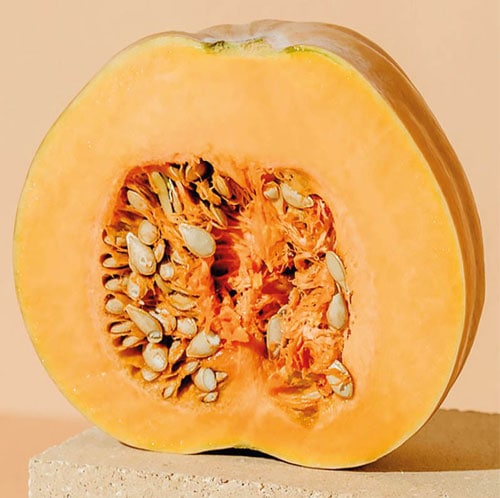The antioxidant beta-carotene, which gives pumpkins their vibrant orange color, is responsible for many of the fruit’s potential health perks.
Carving pumpkins, roasting the seeds for a nutrient-rich snack, and displaying the candlelit faces on your porch are fall traditions that many people enjoy. But these bright gourds aren’t just for show, and their nutritional potential isn’t limited to pumpkin seeds alone.
Pumpkin flesh, or pulp, is a vehicle for many nutrients. “Pumpkin is a powerhouse of potassium and fiber, two nutrients that most adults are falling short of in their diets,” says Joan Salge Blake, RD, a clinical professor of nutrition at Boston University. While pumpkin pies, breads, and muffins are common ways to enjoy the fruit — yep, pumpkin is technically a squash — baked goods aren’t the only option. You can roast pumpkin cubes and serve them alongside your mains, or incorporate the cooked flesh into soups, stews, curries, salads, and chilis. Fresh pumpkin is best when it’s in season, which is during the fall and winter months, according to the U.S. Department of Agriculture (USDA). With canned pumpkin, you can enjoy fall flavors all year long. Canned pumpkin makes it easy to add steamed pumpkin to smoothies, hummus, oatmeal, and pasta sauces. Just be sure to grab plain canned pumpkin instead of pumpkin pie filling, which can include added sugar.
No matter how you prefer to eat your pumpkin, here are seven reasons you’re going to want to start today.
1. High in Fiber and Pectin, Pumpkin Flesh Can Aid Digestion
Dietary fiber is an essential nutrient that’s mostly associated with fueling the digestive tract and preventing constipation, but its benefits go far beyond that. In addition to improving gut health, fiber supports cardiovascular and metabolic health, and encourages longevity, according to the Mayo Clinic. Despite the many benefits of fiber, many people don’t get enough of this nutrient. According to the USDA, 1 cup of cooked pumpkin flesh packs 7.1 grams of fiber, making it an excellent source. Pumpkin flesh is also rich in pectin, a type of soluble fiber. “Pectin is a natural prebiotic, which helps feed the good, healthy probiotic microbes in the gut,” says Jenna Volpe, RDN, who’s based in Austin, Texas, adding that this is why pumpkin tends to be well tolerated on low-FODMAP and irritable bowel syndrome-friendly meal plans.










